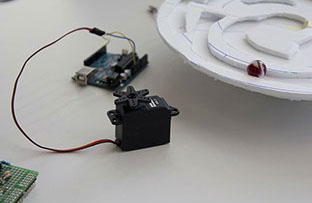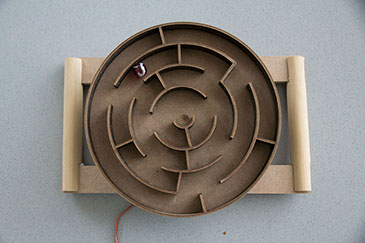Module - 2013
Sense your Heart
In general
In this module I learned about the biology of the heart and how we can use different sensors to get specific information from the heart and our body. We made an arduino based PPG heart sensor that we later on used in a small design assignment. In this design assignment we created a game application that uses someone’s heart rate variability as an input.
Although I found this module quite specifically focused on the heart, I did learn how we could use sensors for our body to generate input for applications other than strictly medical. I learned that by the integration of bio-feedback we can make designs that do not have the experience of a medical device, but still offers great value for monitoring health care.
Knowledge of the biology of the heart
In this module I learned about the biology of the heart, how you could measure different factors of the heart (which are important in the medical world) and what these measures could represent. For me it was quite a lot to comprehend on such a specific subject as the heart, but still interesting to learn about it. While I got a glimpse of what possibilities heart measurement can have, I also learned that with a relative simple PlethysmoGraphy (PPG) heart sensor, you can actually already determine quite some things about the state of being of someone that are opportunities for designers to work with.
HRV
When designing intelligent systems it is often preferable that you can know the user’s state of being, for example how much someone is stressed. With a PPG sensor I learned to determine the Heart Rate Variability (HRV) and when monitoring this you will notice a low HRV value when someone is stressed. Yet, a low HRV doesn’t always mean someone is stressed; it can be excitement or other state of beings. The point I learned is that I can use relative simple tools like a PPG heart sensor in my prototypes to test certain statements I make or simple test my prototype already in an early phase of the project.
Building my own PPG sensor
I build my own PPG sensor from a standard schema, which I can attach to my Arduino. Although it looked quite easy to make (I have already some experience in soldering) it took me the whole day to finish the tool. I learned I work quite precise in building this, but since I forgot a few connections it took more time to find out what the problem was. Some knowledge of the aspects of the sensor, like the amplifier, I can use for future electronic prototyping when needed.
Biofeedback
When we designed an application for the PPG sensor I found it interesting that there are actually many new opportunities for games when combined with biofeedback. When integrating biofeedback into games, it will make the game more personal. Normally the user can influence the game with parameters that he has full control and awareness of. When using the Heart Rate Variability as input for the game is becomes something you can influence much less and you might not even be aware of your influence. I learned that therefore biofeedback is important, because it will give the user insight of parameters in his body that he normally is much aware of. This new possible awareness opens a lot of opportunities, not only for medical implementations.
Using filters
In this module we also learned about using filters in general and specifically for sensing your heart. I was already familiar with theoretical knowledge of filters, but I learned using filters in practice is not so obvious. In our design we used a Servo motor that was using the HRV input to determine its rotation angle. Somehow the motor showed a kind of convulsion behavior, which we couldn’t tackle, also after discussing this with Geert. When we plotted the rotation behavior over time we could see this convulsion more clearly and figured out that a low-pass filter would solve the problem. I learned that when we made the problem more visible, the solution became more obvious, especially for applying filters.



Building my own PPG sensor
Prototyping with PPG sensor implemented
Final prototype: Marble maze with PPG sensor